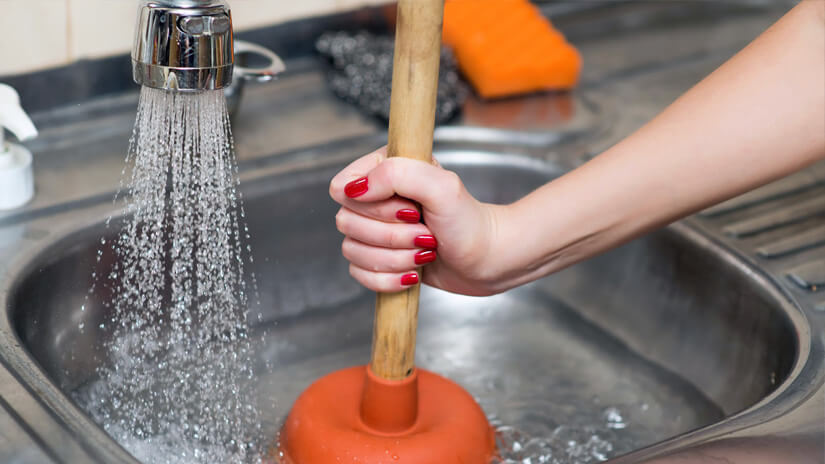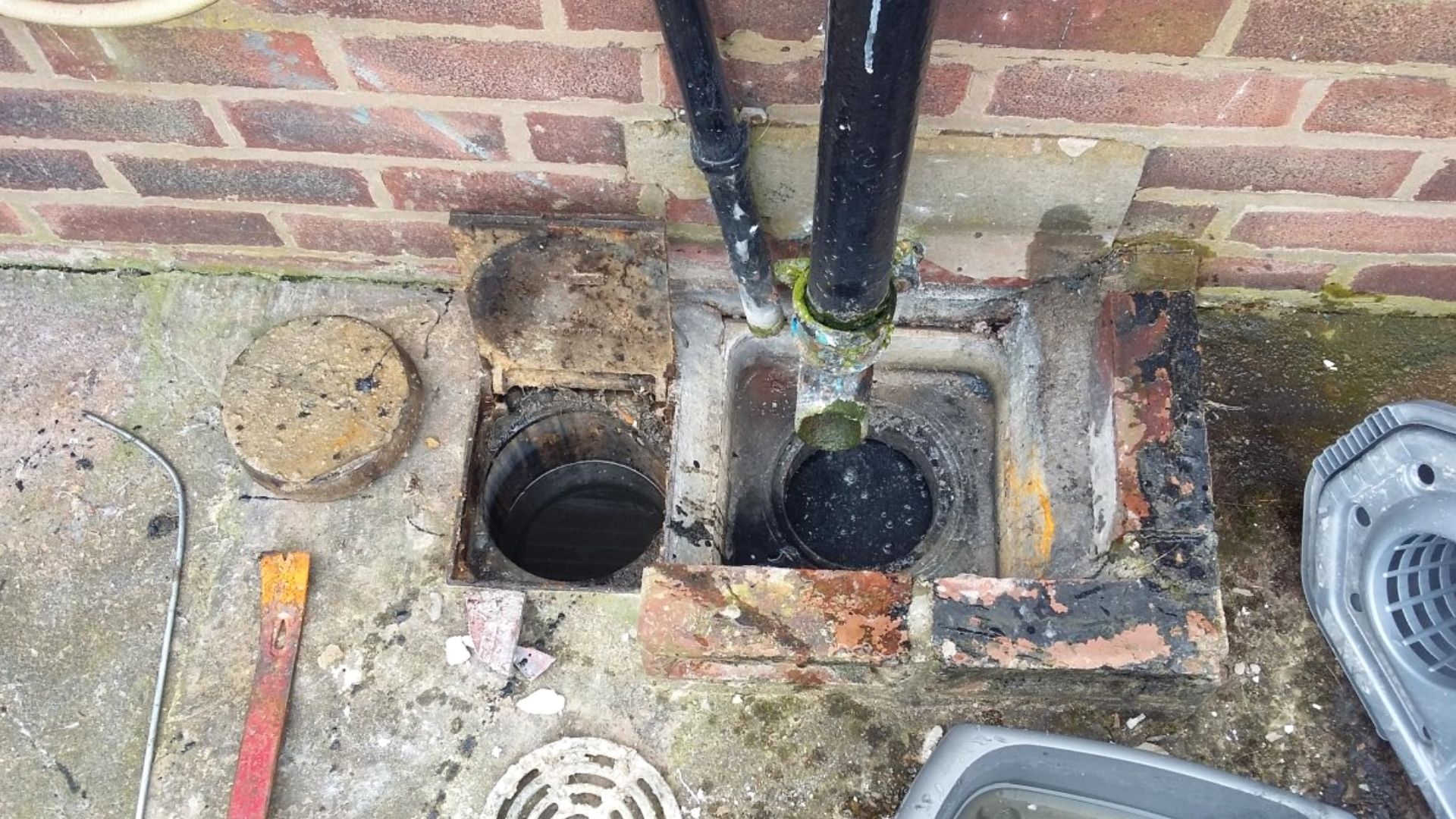The content directly below in relation to How to handle a clogged drain in your home is pretty much entertaining. Read it yourself and figure out what you think about it.

Introduction
Handling an obstructed drain can be an irritating experience, interfering with day-to-day tasks and possibly triggering damage to your property. Nonetheless, prior to reaching out to plumbing professionals, there are actions you can take to deal with the concern on your own. In this guide, we'll check out DIY options and preventive measures to tackle an obstructed drain properly.
Determining the Issue
The first step in attending to a blocked drainpipe is recognizing the indications. Slow-moving drain, gurgling audios, foul odors emanating from drains, or water backing up are common indications of a blocked drain. Determining these indicators early can help avoid additionally complications.
Choosing the Right Plumbing Solution
When picking a pipes service, consider variables such as experience, licensing, and client reviews. Pick a reputable plumbing technician with a track record of high quality workmanship and clear prices techniques.
Expense Factors to consider
The expense of specialist drainpipe cleaning services can vary depending upon the extent of the blockage and the plumber's prices. Demand quotes from several suppliers and ask about any type of surcharges to ensure openness and prevent shocks.
Security Measures
When attempting do it yourself drain cleansing, focus on safety. Use safety gloves and glasses to avoid contact with dangerous chemicals or bacteria. Never blend various drainpipe cleansing products, as this can produce harmful fumes.
Instance Studies
Real-life examples show the performance of do it yourself solutions and the value of prompt specialist treatment in solving drainpipe blockages.
Common Sources Of Obstructed Drains
Understanding the variables that add to drain clogs is necessary for efficient resolution. Usual perpetrators include hair, soap residue, grease, food particles, and foreign things like hygienic products or paper towels. Tree origins getting into below ground pipes can additionally cause substantial blockages.
DIY Solutions
For small blockages, several DIY solutions can be effective. Pouring boiling water down the drainpipe can help liquify oil and particles. Baking soda and vinegar or a mixture of salt and baking soft drink can function as all-natural cleaners. Making use of a plunger or pipes snake to dislodge blockages is an additional choice.
Devices and Tools
Having the right tools available can make do it yourself drainpipe cleaning much more effective. A plunger is a flexible device for getting rid of clogs in sinks, toilets, and showers. A plumbing snake or auger can reach deeper clogs, while drain cleaning chemicals can be used carefully for stubborn obstructions.
Preventive Measures
To avoid future blockages, adopting safety nets is crucial. Install drainpipe guards or strainers to capture hair and particles prior to they enter the pipes. Frequently flush drains with hot water to liquify oil accumulation, and stay clear of disposing of grease or solid waste down the tubes.
When to Call a Specialist
While do it yourself remedies can resolve small clogs, specific signs suggest the need for specialist support. Relentless blockages, foul odors in spite of cleansing efforts, or several drains supporting at the same time are warnings that warrant professional treatment.
Verdict
By following the tips described in this overview, you can properly deal with obstructed drains pipes and stop future pipes concerns. Whether going with DIY solutions or seeking professional support, timely action is key to maintaining a healthy and balanced pipes system and maintaining the stability of your home.
How to Clear a Clogged Drain Yourself (And When to Call In the Professionals)
What Can Clog a Drain
Dirt Skin flakes Hair Grease Soap scum Food Offset pipes Tree roots Small objects Mineral buildup DIY Tricks to Unclog a Drain
You can fix this! Once you have identified the source of the clog (or have a vague idea), you can try one or a combination of these fixes in order to clear your plumbing.
Wire Hanger or Snake
Untangle and clear out hair from a drainpipe with a homemade snake. Use a straightened-out wire hanger with a 90-degree angle hook to locate the clog and drag out any unwanted material.
Remember not to push the clog further down to where the wire hanger cannot reach! If you need to follow up with a plunger, give it a try. Your efforts might be more successful after it’s been wire-snaked.
If you want to get fancy and don’t have a wire hanger to spare, head to the store and pick up a hand-operated drain snake. You can get one for $10-$30. It may save you the hassle, and provide additional length to reach deep into the clogged pipe.
Plunger
A cup plunger has a suction cup attached to a wooden handle. The rubber creates a seal around the drain, and increases the pressure force of the plunger.
Plunge for 30-second increments to loosen the clog. This may need to be repeated over the course of 15-20 minutes. Once plunged, run the water to flush the remaining material out of the drain.
Remember– never use a plunger if you have used a chemical drain cleaner. These chemicals can splash up from the force of the plunger and cause serious injury or burns.
Boiling Water
Hot water can sometimes break up materials into a flushable amount. Dirt, grease, and soap buildup requires heat in order to unstick from surfaces.
Take your kitchen kettle and heat your water to a boil. Once it reaches a rolling boil, pour it directly down the drain into the blockage. Carefully follow with plunging, if necessary.
Don’t worry if this takes more than one try! It can often take multiple kettles and repeated plunging in order to clear a particularly stubborn clog.
Chemical Drain Cleaner
As a last resort, pick up a bottle of chemical drain cleaner. Drain-cleaning chemicals are potent, and not very good for the environment.
You may need to wear protective eyewear in gloves before handling your bottle of chemical drain cleaner. Follow the instructions printed on the bottle, and flush with water as soon as the instructions allow. Do not follow with plunging.
Baking Soda and Vinegar
As a safer alternative to chemical drain cleaner, baking soda and vinegar can create a chemical reaction that clears tough clogs.
Combine one cup of cleaning vinegar with one cup of boiling water, and set aside. Once you have done this, pour half a cup of baking soda down the drain. Give the baking thirty seconds to settle and cover a large portion of the problem drain.
Following the baking soda, pour down your vinegar and hot water solution. Once the vinegar and baking soda combine, the mixture will bubble and fix. Let this reaction fizzle in the drain for about an hour.
After an hour, follow with a kettle’s worth of hot water. The heat and liquid should flush out any remaining material.
When to Call a Plumber
If your DIY attempts haven’t cleared your clog drain, it’s time to call in a professional. It’s not worth losing access to your kitchen sink or high-traffic bathroom. A clog in a vital area can keep you from the things you’d rather be doing, and derail your routine.
Anytime a clog is causing water to spread is a time to call in a plumbing service. What starts out as a little bit of water can quickly grow into serious, expensive water damage.
Additionally, a serious clog can result in burst pipes or serious leaks. Make sure you know when to take it seriously!
https://myguysnow.com/how-to-clear-a-clogged-drain-yourself-and-when-to-call-in-the-professionals/

We had been introduced to that article on Tips for Dealing with Clogged Drains and Sewer Lines through an acquaintance on a different web page. Enjoyed our piece? Please quickly share it. Let others discover it. Thank you for your time spent reading it.
Website